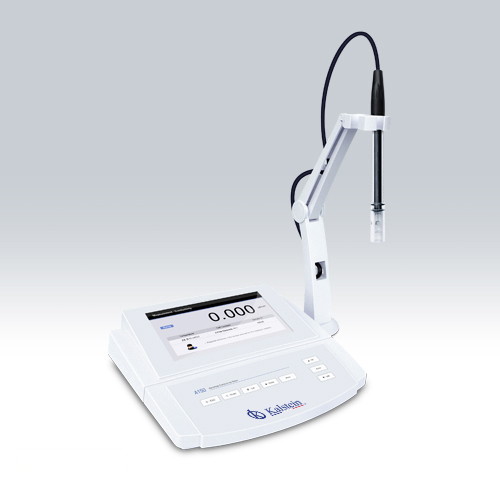The importance of this equipment in industrial and laboratory applications requires that its use be specifically recommended by the manufacturer, to ensure its correct operation, taking into account that calibration of the conductivity meter regularly offers great benefits when using it and obtain reliable results.
This apparatus allows to obtain readings of total ionic force that may exist in a solution, its reading process is simple and fast, this type of process is present in different areas medical, industrial, scientific laboratories and research; having an electrical system allows a simple operation, however, requires certain precautions to be taken by the user for use both inside and outside the laboratory.
Steps for using a conductivity meter in a laboratory
The first step should be to connect the conductivity meter to an electrical current of 110 volts, which must have the ground pole, check this procedure before turning on the equipment, most conductivity meters are equipped with a power button, which is located in the front of the equipment, when doing this, then you must verify that the electrode marks 0.00, before placing the solution.
The next step is to fill the electrode cup with the sample we need to measure, in the case of field conductivimeters, this consists of a probe, which is composed of two electrodes that are inside it, this probe must be immersed in the liquid to be measured; then the meter reads the voltage of the solution, through the electrical resistance, this equipment converts the reading to millimeters per centimeter, taking into account that we must wait in an interval of three to five seconds for the solution to stabilize and be able to take the correct reading that will appear on the screen of the equipment.
Recommendations for measuring and temperature reading
Normally it seems that there is no relationship between conductivimeter readings and temperature, however, conductance is closely related to the actual temperature, so this feature is found in some conductivimeters, to avoid erroneous readings, the reason for this is the ionic force, in this way we can ensure a standardized reading, where the meter reads the conductivity of the solution and not the actual temperature.
On the other hand, to measure the salinity represented by the amount of salts dissolved in a solution, some equipment depends on the manufacturer, have an extra option that offers a salinity option, which internally convert the conductivity reading into a salinity reading, so that the total dissolved solids can be determined by multiplying the conductivity measured in microSeimens by a factor of 0.67.
Conductivity meter calibration
In order to perform this procedure correctly, the equipment has a calibration part called external resistance, it has as function to verify the calibration of the box, it is connected at the output terminals of the box, then this measurement is noted in the control sheet that comes with the equipment in most cases; however, this calibration allows us to detect if there is any variation in the reading box or electrode, it is noted that in the template are already the starting values for both the box with the calibration resistance, and for the electrode with standard solution of CE=3.33 mmhos/cm at a indicated temperature.
Normally conductivimeters are calibrated by the factory, but it is common to have to perform a calibration to check the current state of the equipment, this calibration has the following steps: in the template that come with the equipment appear two trimers, the first to calibrate the cell, which uses an equation to calibrate the cell constant, most of the time is calibrated to 2.40 VAC. And a second trimester that gives us information to facilitate the calibration of the reading scale.
Types of calibration of a conductivimeter
- Calibration with patterns: we can adjust the values read, according to a standard dissolution.
- One-point calibration: usually used in the case of measuring conductivity values close to the value of the standard used, commonly a calibration is used using a more acceptable standard, set at 1143 µS/cm.
- Two-point calibration: this means that patterns were established to establish conductivity, thus avoiding contamination problems
- Three-point calibration: It is recommended to calibrate at three points when the samples to be measured have conductivities covering a wide conductivity zone
In KALSTEIN we have a YR series of conductivimeter, which includes two models, one desktop and another laptop, both designed with the highest technology, measurement of total suspended solids, calibration, now if you want to buy a laboratory conductivimeter in any model to meet the needs of your laboratory, please be aware to contact the best, this service we offer you through our online channels and at the best PRICE in the market, also if you want to know the catalog of high-end products that in KALSTEIN we have for you visit us HERE we assure you a very easy and viable online PURCHASE from anywhere in the world, reminding them that we are Company MANUFACTURER of Laboratory Equipment high level of buying and selling. for more information on this line of products click HERE

